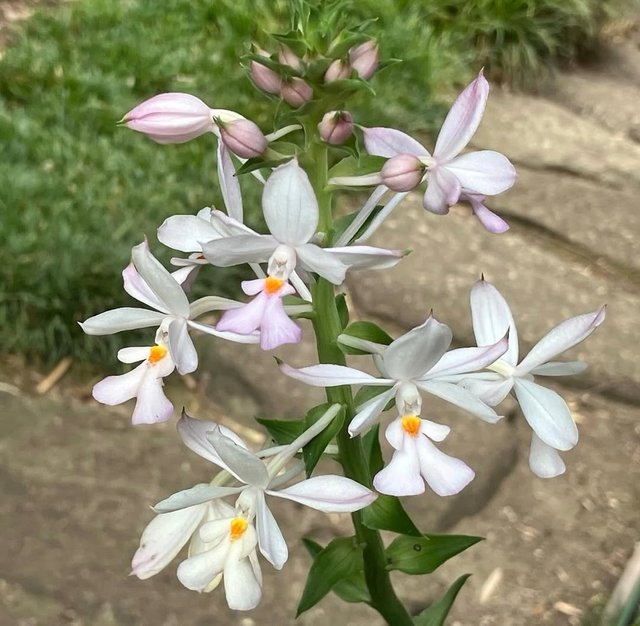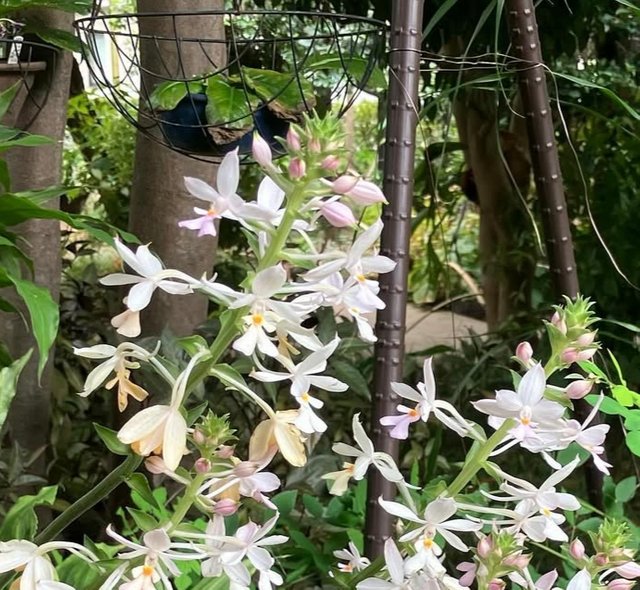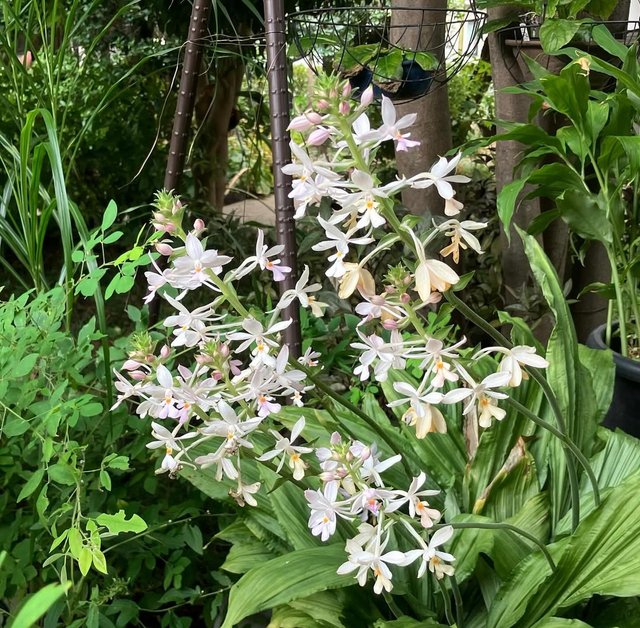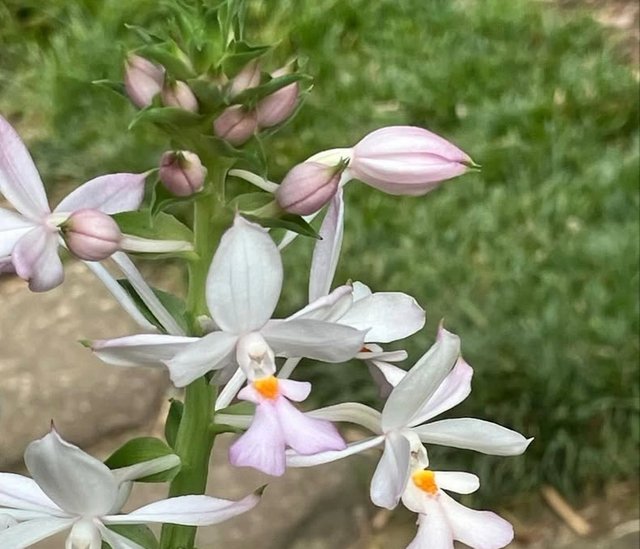Calanthe triplicata
Calanthe triplicata is a species of terrestrial orchid native to tropical and subtropical regions of Asia, the Pacific Islands, and parts of Australia, thriving in humid forests, shaded slopes, and moist lowland to montane habitats. It is a perennial, evergreen plant that grows from underground pseudobulbs and produces large, pleated, lance-shaped leaves that can reach up to 60 centimeters in length, remaining green throughout the year. The flowering stem can grow over one meter tall, bearing numerous white, fragrant flowers with a distinctive three-lobed lip, the middle lobe often yellow or pale green.
Which serves to attract pollinators such as bees and butterflies. This species typically blooms during the rainy season, and the flowers can last for several weeks, making it a valuable ornamental orchid for tropical gardens. Calanthe triplicata prefers rich, well-draining, humus-rich soil with consistent moisture and high humidity, thriving under dappled light conditions that mimic its natural understory environment. It is known for its resilience and ability to adapt to various altitudes, from near sea level to mountainous regions. In traditional medicine, parts of the plant have been used in some cultures for treating ailments.
Though its medicinal properties are not extensively documented in modern pharmacology. As a member of the Orchidaceae family, it reproduces through seeds that require a symbiotic relationship with specific mycorrhizal fungi to germinate successfully in the wild, while in cultivation it can be propagated by division of pseudobulbs. Conservation efforts are important for this species in some regions due to habitat loss from deforestation and land development, though it remains relatively widespread across its native range. Its elegant appearance, cultural uses, and adaptability have made it a popular species among orchid enthusiasts and collectors worldwide.




